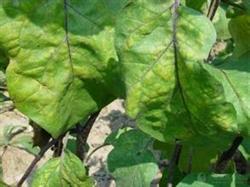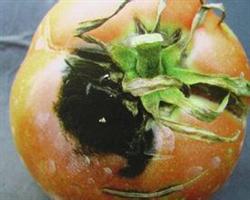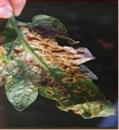How to Control the Fertilizer damage of Tomato

The causes of fertilizer damage to tomato are mainly due to excessive application of chemical fertilizer or improper application method, resulting in damage to tomato root system, decrease of absorption function, impact on leaves, yellowing of leaves, withering of flowers and leaves and even death of the whole plant, and so on. In order to prevent and control the fertilizer damage of tomato, the following management measures should be taken. First, increase the application of organic fertilizer. At present, most eggplant farmers only pay attention to the application of chemical fertilizer, but ignore the use of organic fertilizer, which is not only easy to produce fertilizer damage, but also cause soil consolidation, so it is necessary to increase the application of organic fertilizer, improve the soil environment and reduce the amount of chemical fertilizer as far as possible. reduce the probability of fertilizer damage. Second, soil testing and formula fertilization. According to the soil condition of tomato and the demand for fertilizer in different growth stages, formula fertilization should be carried out and single fertilizer should not be used. for example, excessive use of potassium fertilizer will affect the absorption and utilization of boron, magnesium, iron, zinc, etc., for this reason, fertilizers should be used alternately to prevent a certain fertilizer from being used too much and fertilizing evenly, watering or fertilizing with water immediately after fertilization, so as to dissolve the fertilizer into the soil as soon as possible and reduce the concentration of fertilizer. To facilitate the absorption of tomatoes. Third, adopt scientific fertilization methods. It is necessary to adopt the method of layered fertilization and deep application of the whole layer to make the soil fuse and not to expose the fertilizer to the surface. If the fertilizer of a certain element has been fully applied before planting, but still shows the symptom of deficiency of this element after planting, it should be solved by foliar spraying to promote its normal growth. Fourth, remedial measures. If the tomato is found to have symptoms of fertilizer damage, it should be watered immediately. Generally, the fertilizer damage can be relieved after it has been watered for 3 times. At the same time, some plant nutrient solution can be sprayed to enhance the resistance of tomato and reduce the loss caused by fertilizer damage.
- Prev

How to Control physiological Diseases of Tomato
Physiological diseases often occur in the process of tomato cultivation, which have a great impact on the yield and quality. The most common are deformed fruit, hollow fruit, navel rot, fruit cracking, muscle rot, sunburn, poor coloring and so on. Deformed fruit. It mainly occurs in the period of flower bud differentiation and development, in low temperature and high fertilizer (especially nitrogen camp.
- Next

How to use medicine to prevent tomato from growing "black hair"
Leaf mildew is a common disease in tomato. Although it does not directly infect the fruit, it will lead to the decrease of leaf function and affect the yield and quality. In production, some farmers often report that it is difficult to control leaf mold, and the effect is not obvious after spraying. The cause of poor control effect is mainly due to improper prevention and control methods, and attention should be paid to the following.
Related
- Where is it suitable to grow horseradish in China? it is expected to see the middle altitude horseradish in Alishan.
- How to prevent tomato virus disease reasonably? (Control methods included)
- Many people like to plant towel gourd on the balcony. What are the main points of this method and management?
- What crops can chili peppers be mixed with?
- Fertilization techniques and matters needing attention in Tomato
- What are the grafting techniques for peach seedlings in spring?
- Harm and control methods of root swelling disease of Chinese cabbage
- What are the pests of sweet potatoes? How to prevent and cure it?
- Symptoms, causes and Control methods of navel Rot in Tomato
- The cause of "Cucumber rotten bibcock" in Farmers' planting Cucumber and its Control Plan

